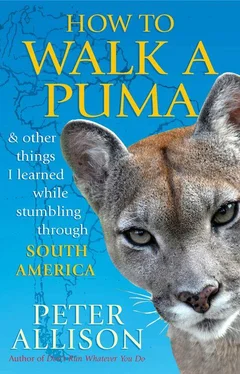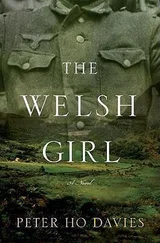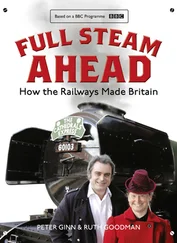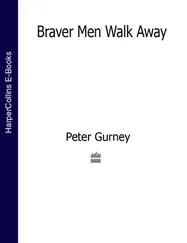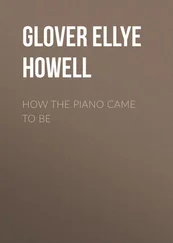Sirens started, one by one, and far below us some headlights wended their way in a serpentine fashion that made me think they must be avoiding rubble. Later I learnt that many of the lights I saw were people hastily making their way home to loved ones—it was a Friday night after all, and Latinos start partying late and finish even later.
‘What do you think is going on out there?’ Harris asked.
‘No idea,’ I said, wishing there was more light but suspecting from the sheer force of the shake that we would be without electricity for some time. The quake was the most powerful sensation I had ever experienced, and while the shaking continued I had felt more impotent than ever before. But it occurred to me now that I should go out and see if there was a way I could be of help to anyone. There would be death out there, I knew, but how much? The quake that had rocked Haiti around a month earlier had claimed over one hundred thousand lives. Images from that disaster also made me worry about looters. The Gomezes’ house is beautiful, and perhaps only the well-built homes of the wealthy would now remain standing. While I wouldn’t begrudge anyone searching for food or shelter I knew that a disaster could bring out the very worst in human nature. As Harris and I trudged back to the second floor I privately decided that the top of the stairs would be our best line of defence should anyone break in.
There wasn’t much I could do until sunrise, but I lay awake for several hours after I went back to bed. Just before dawn, there was a sound like an angry ocean, and a second later the house began to shake again. Once again, the windows flexed far more than I thought glass could, and the bed bounced as if a giant was jumping on it (though the Minke was asleep).
‘I felt that one,’ she said, waking as I got up.
‘Hard not to,’ I replied, finally agreeing with Harris that Lisa was tough, as she was clearly more stoic than I and determined to sleep through this event. I kissed her cheek and again went out into the hall and joined the family.
‘Not as big as the first,’ said Harris.
‘Nope. Don’t think so,’ I agreed.
‘How many more will there be?’ Marguerite asked.
Again, I had no idea. I knew that earthquakes were caused by tectonic plates pushing against each other until the build-up forced one to slip over, under, or alongside the other, and that Santiago sat right on the junction between two such plates. In 1960 it had experienced the most powerful earthquake since records began, at 9.5 on the Richter scale, so devastating that most of the city had had to be rebuilt. What I learnt after our earthquake was that Chile had subsequently instituted one of the world’s strictest building codes, and actually adhered to it. But looking over the darkened valley it was impossible to know how successful they had been. Only dawn would tell.
Tremors came through the last dark hours, and through the morning, triggering howls from every neighbourhood dog except the Gomezes’ loafing cocker spaniel, who for no reason apart from probable stupidity just ignored the entire affair.
With light came the discovery that the only apparent damage to the house was a gas bottle that had torn loose from some flimsy mounts and would be easily fixed. A walk through the neighbourhood showed our reprieve was no one-off miracle; apart from broken glass and zigzagging cracks in roads there was no significant damage. Only later would we find out that some of the few buildings that had survived the 1960 quake had been damaged or destroyed fifty years later, unable to take a second blow.
Within six hours of the initial quake the electricity was back on. The internet took only twelve hours to be reconnected. The local supermarket stayed shut for a day as the staff put everything that had fallen off the shelves back on (I imagined them watching forlornly each time aftershocks toppled everything off again), and the ATMs all ran out of money as people made panic withdrawals. Nevertheless, by Monday it was all systems go—stores open, banks operating, food available. I had faced greater inconveniences in Africa without any natural disasters involved.
The media was painting a different picture, however. While what we could see from our windows seemed secure enough, it was hard to get reliable information about other places the quake might have hit. We gathered around the television as soon as the power was back on and were surprised to learn that Santiago was in flames, the city destroyed; as bad as that sounded, Concepción to the south was even worse, reporters claimed.
‘They’re pretty much saying we’re dead,’ I said. ‘I feel fine though.’
It was the worst sort of sensationalist reporting. Concepción, it was true, was far worse hit than the capital, but Santiago got a black eye, and was never knocked down. Oft-repeated footage showed the army beating a looter, but close observation showed he was stealing a television, and a woman behind him taking bread from a supermarket was given free passage. Within days I began to see a national spirit that I had never encountered anywhere else before. Chileans rallied to help their fellow countrymen, in ways small and large. Cars were painted with the slogan ‘ Fuerza , Chile!’ (Strength, Chile!), and teens—who I usually (and cynically) believe are only good for pimple-milking for oil—volunteered inside supermarkets, asking customers if they would buy items such as milk formula or tinned food that could be donated outside for distribution to people in need. Normally if there is any animal that I would claim to dislike it is my own species, but in Santiago after the quake I found myself with a permanent lump in my throat at the solidarity being shown.
•
Two weeks later Lisa’s parents, at her urging, came to visit. We all felt the best way we could help was to put money into the economy and let others know that Chile was dealing with the problem better than an outsider might imagine. We drove the Minke’s parents along the Pan-American Highway, Chile’s major artery, and saw sights that staggered her father, an engineer, who was able to fully appreciate how well roads and buildings had withstood the violence, and how quickly infrastructure was being tended to.
‘I don’t believe it,’ Papa Minke said one day as we drove along. ‘I’ve never seen that in the UK!’
I scanned around for things I imagined would be unfamiliar to UKsians, such as a shower or winning sports team, but saw none.
‘There were four guys standing in a hole back there, and instead of just one guy working and three “supervising”, all four had shovels and were hard at it!’ he explained.
In the wrecked town of Linares we witnessed the greatest destruction wrought by the earthquake. Adobe houses had tumbled to the ground, and the church’s steeple was far from plumb. Incredibly no deaths had been reported in Linares itself, but the greater Maule region it is a part of had experienced the highest toll from the quake. Despite this there was no wailing, just hard work going on. There was nowhere to stay in Linares, so we bought some supplies there and drove on until we reached Chillán. It took some searching, but we found a small hostel that was open, where the apologetic owner explained that the water service was unreliable, but offered us a discounted rate for the rooms.
We refused the discount, stayed the night, then pushed on the next morning, passing huge groups of volunteers who were busy building shelters or distributing food. This worst of disasters had brought out the best in people, and I felt a little guilty that on the night of the quake I had been so concerned about looters.
During our two-week-long tour of Chile details began to emerge of just how powerful the quake had been. At the epicentre it had registered as 8.8 on the Richter scale, with a reading of 8 in Santiago. Its effects had been felt as far away as New Orleans. The city of Concepción had moved a staggering three metres from where it used to be, Santiago twenty-seven centimetres. Even Buenos Aires, on the other side of the Andes, had shifted four centimetres. South America’s tail had wagged, making maps of the world subtly wrong. The quake had been so violent that the Earth had shifted slightly on its axis, shortening the length of the day by a fraction of a second.
Читать дальше
